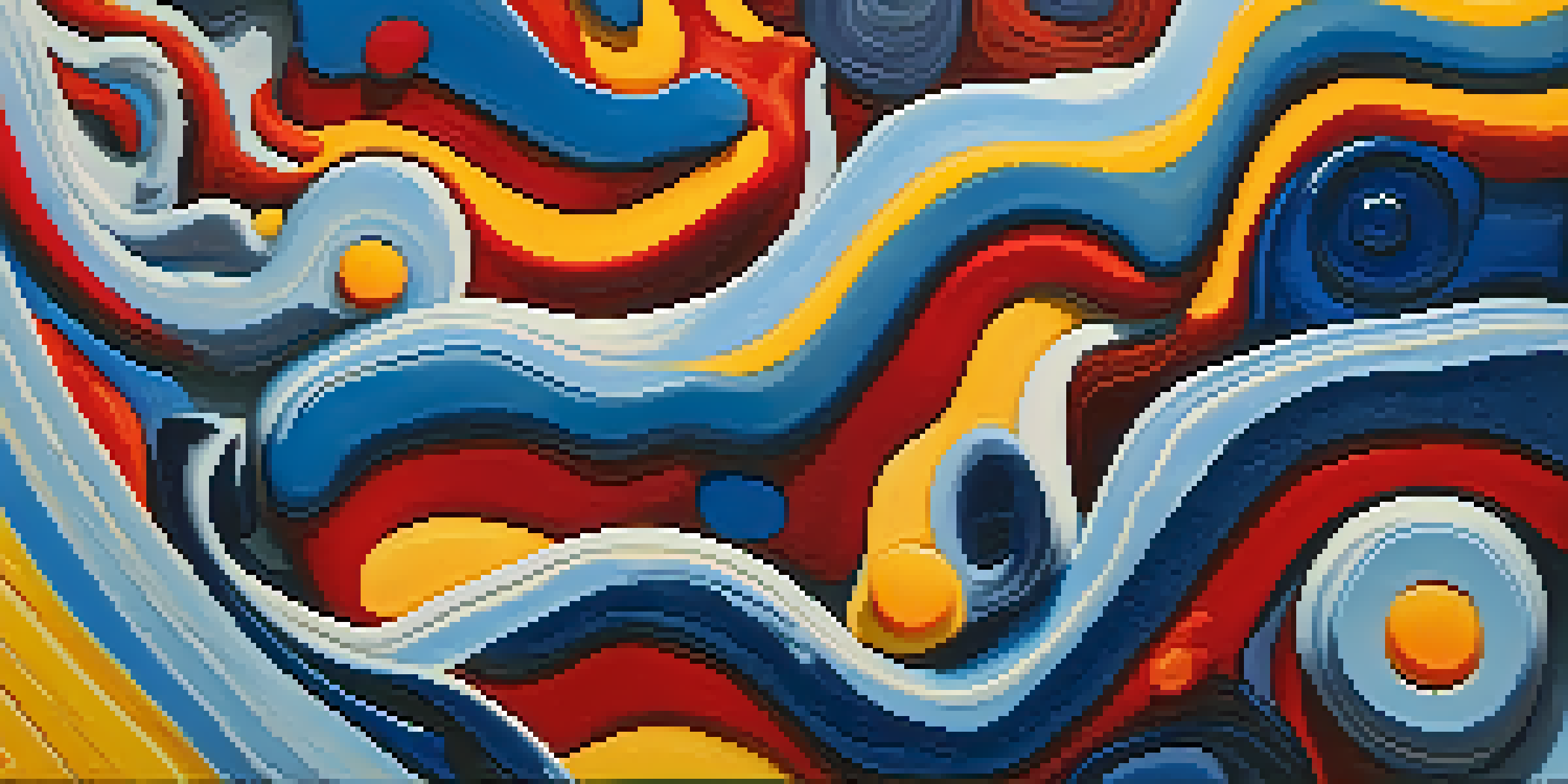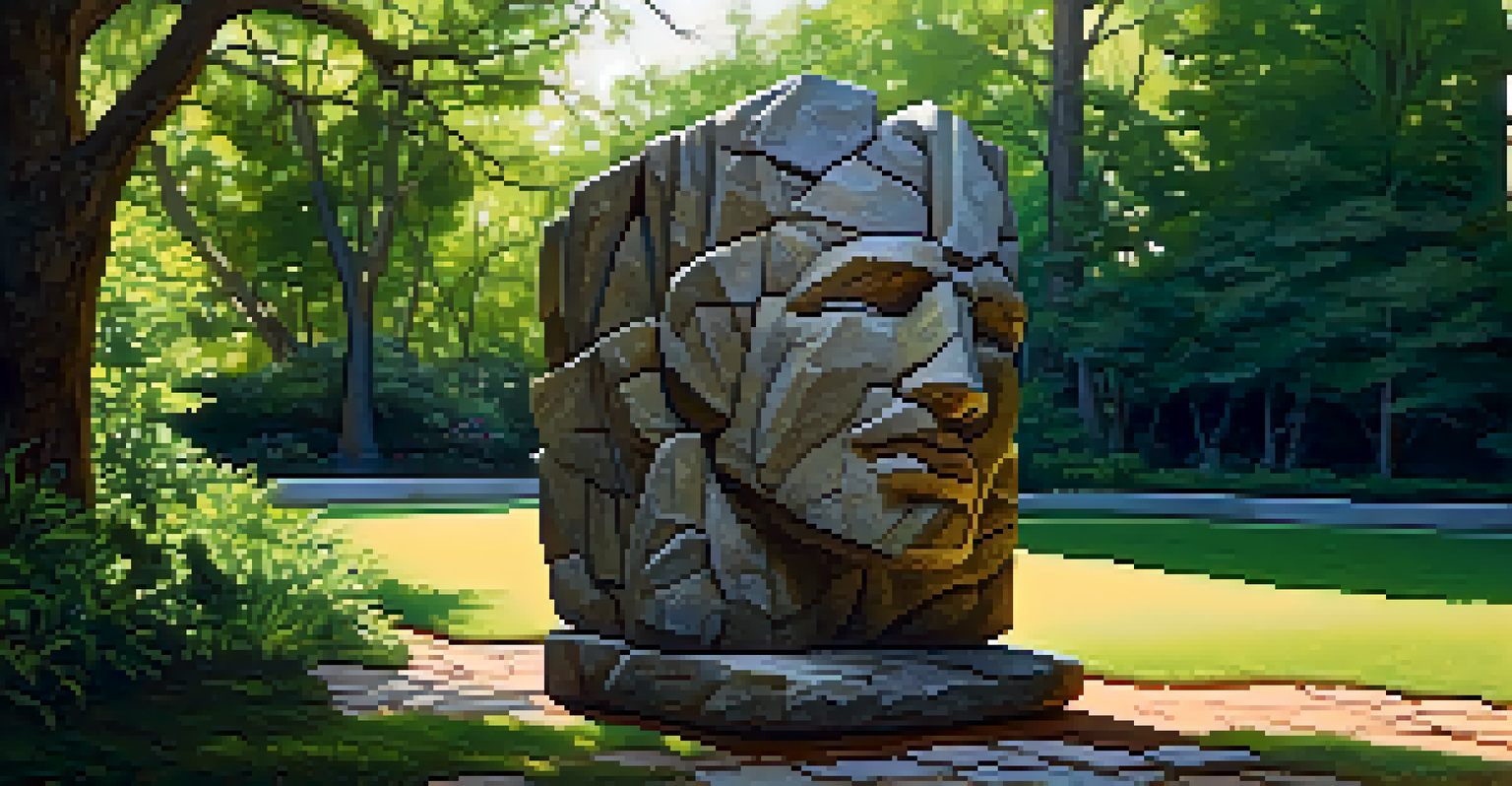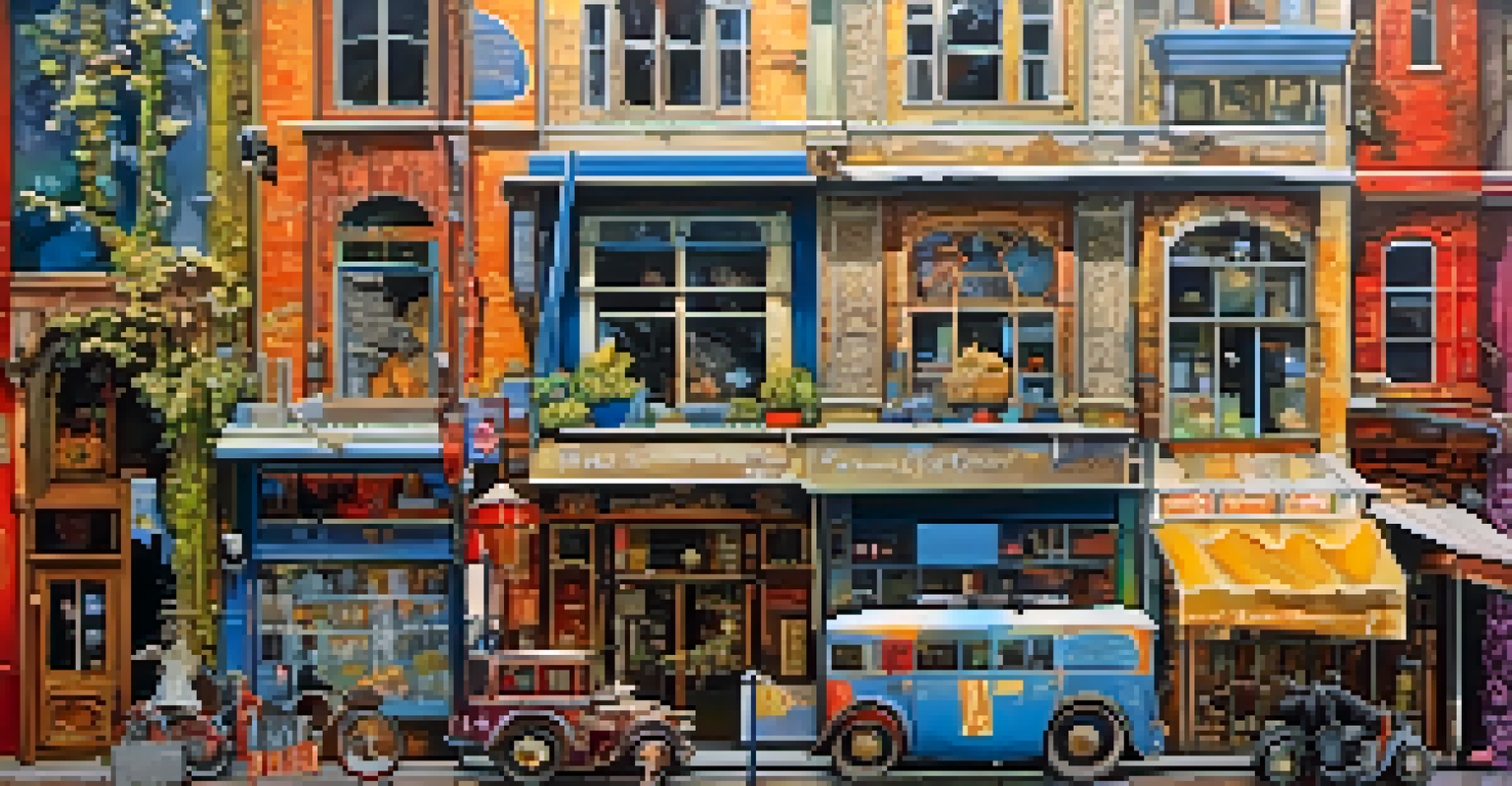The Influence of Texture in Painting and Sculpture

What is Texture in Art and Its Importance?
Texture in art refers to the surface quality of a piece, whether it feels smooth, rough, soft, or hard. It's a crucial element that adds depth and dimension, allowing viewers to engage with the artwork beyond mere visuals. Think of a painting: the texture can evoke feelings, create focal points, and even guide the viewer's eye across the canvas.
Texture is the visual and tactile quality of a surface, and it plays a significant role in how we perceive art.
In sculpture, texture plays a vital role too. A polished marble statue can feel serene and refined, while a rugged, unrefined piece might convey raw emotion. The way light interacts with different textures can also enhance the form, drawing attention to specific details or creating interesting shadows.
Ultimately, texture enriches the storytelling aspect of art, inviting viewers to interpret and connect with the piece on a multi-sensory level. By understanding texture, we can appreciate how artists manipulate it to convey deeper messages and emotions.
The Role of Texture in Painting Techniques
In painting, texture can be created through various techniques, such as impasto, where thick layers of paint are applied to create a tactile surface. This technique not only adds visual interest but also invites the viewer to imagine the feel of the paint as it was applied. Artists like Vincent van Gogh famously used impasto to enhance the emotional impact of his work.

Other methods include glazing and scumbling, which can create a sense of depth and luminosity. Glazing involves applying thin, transparent layers of paint, while scumbling creates a broken color effect by brushing a lighter color over a darker one. These techniques showcase the versatility of texture in painting, allowing artists to manipulate light and shadow effectively.
Texture Enhances Art Engagement
Texture adds depth and dimension to art, allowing viewers to connect with the piece on a multi-sensory level.
The choice of texture can also reflect the artist's personal style. Some may prefer smooth, blended surfaces to convey tranquility, while others might opt for bold, rough textures to express intensity. This variety enriches the visual language of painting, making each piece unique.
Texture as a Tool for Emotional Expression
Texture has a powerful influence on the emotions evoked by a piece of art. For instance, a piece with rough, jagged textures may elicit feelings of chaos or turmoil, while smooth textures might convey serenity and peace. Artists often select specific textures to align with the emotions they wish to portray, making texture an essential tool in their creative arsenal.
The texture of art is the way the artist invites the viewer to engage with the work on a sensory level.
In both painting and sculpture, texture can also evoke memories or sensations. A textured surface might remind someone of a familiar object, like a weathered tree bark or soft fabric, creating a personal connection to the artwork. This emotional resonance can deepen the viewer's experience and engagement.
Ultimately, the interplay of texture and emotion enriches the viewer's journey through the artwork. It transforms a simple visual encounter into an immersive experience that can leave a lasting impression.
Historical Perspectives on Texture in Art
Throughout history, texture has played a significant role in the evolution of art movements. During the Baroque period, artists often used dramatic textures to create a sense of movement and emotion in their work. The play of light on textured surfaces became a hallmark of this era, drawing viewers into the narrative.
In contrast, the Impressionists embraced texture as a way to capture fleeting moments and the essence of light. By using loose brushstrokes and varied textures, they depicted scenes of everyday life with a sense of immediacy and vibrancy. This shift marked a departure from the highly detailed techniques of previous eras.
Emotion Through Textural Choices
Artists use specific textures to evoke emotions, transforming visual encounters into immersive experiences.
As art movements evolved, so did the perception of texture. Modern and contemporary artists often experiment with unconventional materials and techniques, further expanding the definition and application of texture in art. This ongoing exploration keeps the conversation about texture alive and dynamic.
Texture in Sculpture: A Multi-Dimensional Experience
Sculpture offers a unique opportunity to engage with texture in three dimensions. Unlike paintings, sculptures can be touched and experienced from various angles, allowing the texture to play a significant role in how we perceive the artwork. The tactile nature of sculpture invites a personal interaction that flat art cannot provide.
Different materials—such as clay, metal, wood, or stone—each bring their own unique textures and qualities to sculpture. A smooth bronze piece might evoke a sense of elegance, while a rough-hewn stone sculpture might feel archaic and powerful. The material choice enhances the overall narrative and emotional context of the work.
Moreover, contemporary sculptors often incorporate mixed media, merging traditional materials with modern elements. This fusion can create intriguing textures that challenge our perceptions of sculpture. As viewers, we are encouraged to explore the relationship between form, texture, and meaning in a more profound way.
Modern Artists and Their Use of Texture
Modern artists have embraced texture as a defining characteristic of their work, often pushing the boundaries of traditional techniques. For instance, artists like Anselm Kiefer utilize rough, layered surfaces to convey themes of memory and history. The palpable texture of his pieces invites viewers to physically experience the weight of the subject matter.
Similarly, contemporary painters like Julie Mehretu use diverse textures to layer different elements of her compositions, creating a sense of chaos and order simultaneously. This innovative approach allows for a rich visual experience that challenges conventional perceptions of painting.
Evolution of Texture in Art History
The perception and application of texture have evolved through art movements, reflecting changes in artistic expression and technique.
These modern interpretations of texture reflect a broader trend in the art world, where tactile engagement is increasingly valued. As artists continue to explore new materials and techniques, texture remains a central theme that resonates with audiences on multiple levels.
The Future of Texture in Art
Looking ahead, the role of texture in art is likely to continue evolving. With advancements in technology, artists are exploring new mediums and techniques that challenge traditional definitions of texture. Digital art, for example, creates opportunities for virtual textures that can be both seen and felt in innovative ways.
Additionally, the rise of mixed media and installation art encourages artists to incorporate textural elements from diverse sources, creating multi-sensory experiences. This blending of textures can invite viewers to engage with art in more dynamic and immersive ways.

As we move into the future, the exploration of texture will undoubtedly remain a vital aspect of artistic expression, encouraging both artists and viewers to rethink their perceptions and interactions with art. The ongoing dialogue about texture promises to enrich our understanding of the visual and emotional landscapes of creativity.